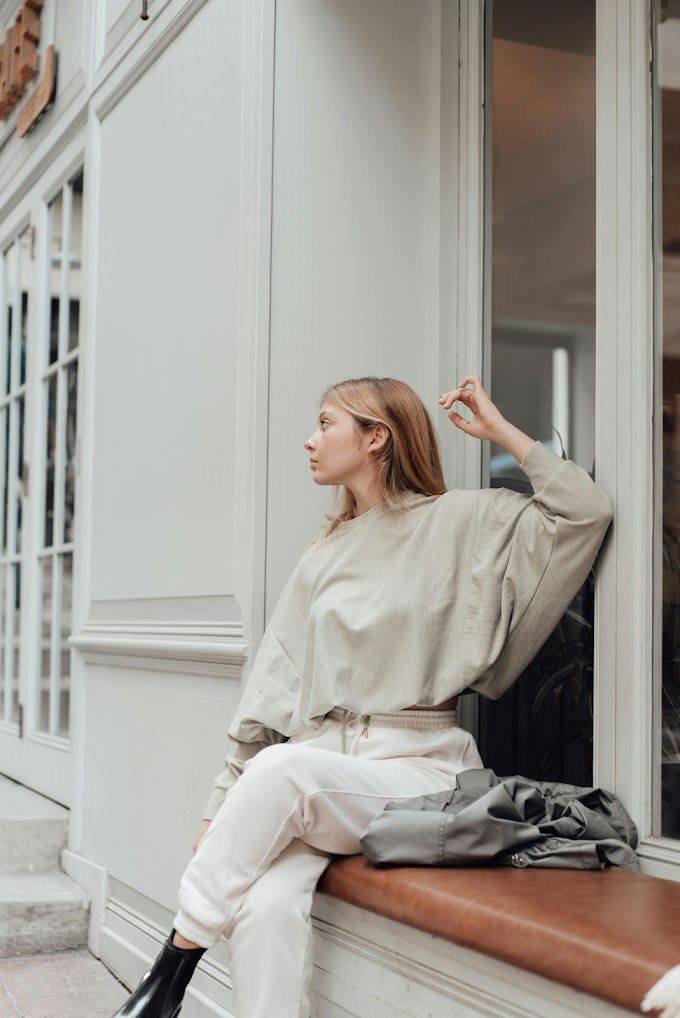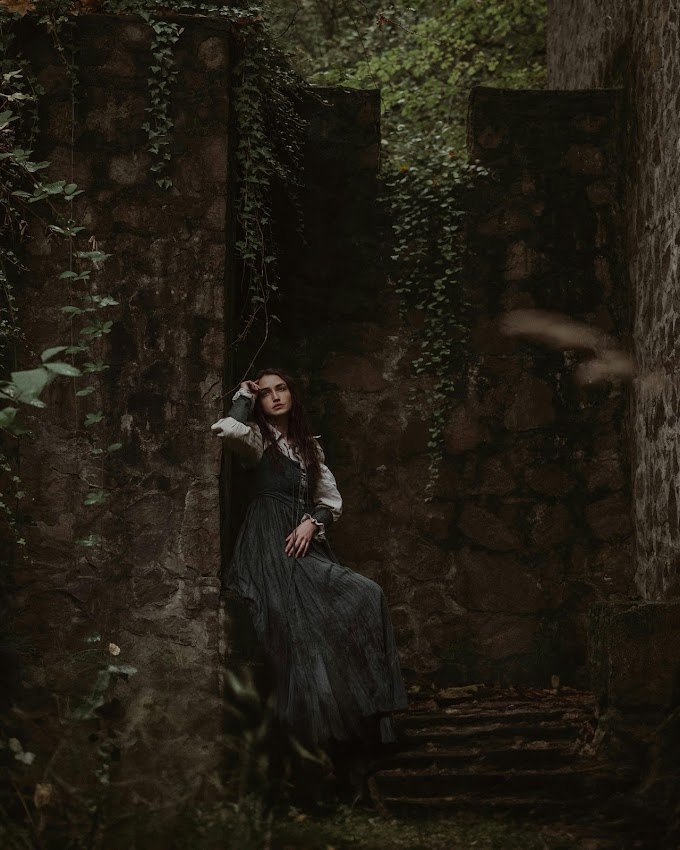The Rockabilly Style of the 1950s: A Fusion of Fashion, Music, and Rebellion
The 1950s were a decade of cultural transformation, characterized by the rise of rock 'n' roll music, the emergence of youth subcultures, and a growing sense of rebellion against the conformist norms of the post-war era. One of the most iconic expressions of this cultural shift was the Rockabilly style, a vibrant and edgy fusion of fashion, music, and attitude that captured the spirit of the time. Born from the blend of rock 'n' roll and "hillbilly" (country) music, Rockabilly was more than just a musical genre; it was a way of life, influencing fashion trends that have endured for decades.
Origins of Rockabilly Music and Culture
The Birth of Rockabilly Music
Rockabilly music emerged in the early 1950s as a fusion of rhythm and blues, country, and rock 'n' roll. The genre was characterized by its energetic beat, twangy guitars, and a rebellious attitude that appealed to a young, predominantly white audience. Artists like Elvis Presley, Carl Perkins, Jerry Lee Lewis, and Johnny Cash were at the forefront of the Rockabilly movement, creating a sound that was raw, exciting, and distinctly American.
The term "Rockabilly" itself is a combination of "rock" (from rock 'n' roll) and "hillbilly" (a slang term for country music). This blend of genres reflected the cultural melting pot of the American South, where African American blues and rhythm met white country and western traditions. The result was a music style that was both familiar and revolutionary, capturing the imagination of a generation of young people eager to break free from the constraints of the 1950s.
The Cultural Impact of Rockabilly
The rise of Rockabilly music coincided with the emergence of a new youth culture in the 1950s. The post-war economic boom gave young people unprecedented spending power, and they used it to create their own identity, distinct from that of their parents. Rockabilly music, with its rebellious spirit and anti-establishment attitude, became the soundtrack for this new generation.
The influence of Rockabilly extended beyond music to fashion, language, and lifestyle. The genre's stars, particularly Elvis Presley, became cultural icons, and their distinctive style was emulated by fans across the country. Rockabilly fashion was a rejection of the conservative, buttoned-up styles of the 1950s, embracing instead a bold, rebellious aesthetic that would come to define an era.
The Key Elements of 1950s Rockabilly Fashion
Rockabilly fashion was a bold statement of individuality, characterized by a mix of vintage Americana, Western influences, and a touch of rebellious flair. The style was both a reflection of and a reaction to the social norms of the 1950s, embodying the spirit of youth rebellion and the desire to stand out from the crowd.
For Women: The Rockabilly Pin-Up Look
The Rockabilly look for women drew heavily from the glamour and femininity of 1940s pin-up girls, combining these elements with a more playful, edgy attitude. The result was a style that was both sexy and fun, with a distinctive retro vibe.
Dresses and Skirts
The cornerstone of Rockabilly women's fashion was the circle skirt or swing dress, which featured a fitted bodice and a full, flared skirt that hit just below the knee. These dresses were often adorned with bold prints such as polka dots, cherries, or gingham checks, and were usually paired with a wide belt to accentuate the waist.
Another popular option was the pencil skirt, which hugged the hips and thighs before tapering down to just below the knee. Paired with a fitted blouse or a cropped cardigan, the pencil skirt created a sleek, hourglass silhouette that was both sophisticated and sultry.
Tops and Blouses
Rockabilly tops for women were typically fitted and feminine, with an emphasis on showcasing the waist and bust. Halter tops, off-the-shoulder blouses, and tie-front shirts were all popular choices, often featuring playful patterns and vibrant colors. The goal was to create a look that was both flirty and polished, with a nod to the pin-up aesthetics of the previous decade.
Cardigans and bolero jackets were also a staple of the Rockabilly wardrobe, often worn over dresses or paired with high-waisted jeans or capri pants. These pieces added a touch of vintage charm while keeping the overall look polished and put-together.
Footwear and Accessories
Footwear played a significant role in completing the Rockabilly look. For women, high-heeled pumps or peep-toe shoes were the footwear of choice, often in bold colors like red or black. Polka dots, bows, and other playful details were common, adding to the overall retro vibe.
Accessories were essential to the Rockabilly style, with women often donning bold cat-eye sunglasses, wide-brimmed hats, and chunky bangles. Hair was styled in elaborate updos or victory rolls, and makeup was equally dramatic, featuring winged eyeliner, red lips, and perfectly sculpted eyebrows. Bandanas and hair flowers were also popular, adding a touch of vintage flair to the look.
For Men: The Greaser Look
For men, Rockabilly fashion was all about channeling the rebellious spirit of the era’s rock 'n' roll icons. The look was tough, masculine, and effortlessly cool, drawing inspiration from the greasers and rebels of the 1950s.
Jeans and Pants
The foundation of the Rockabilly look for men was a pair of well-fitted jeans, typically in dark blue or black denim. These jeans were often cuffed at the bottom to showcase a pair of sleek, polished shoes or boots. High-waisted trousers were another popular option, particularly for a more formal Rockabilly look, often paired with suspenders and a crisp white shirt.
Leather was a key element of Rockabilly men's fashion, particularly in the form of the iconic leather jacket. Made famous by stars like Marlon Brando and James Dean, the leather jacket became a symbol of rebellion and nonconformity. Paired with a simple white T-shirt and a pair of jeans, the leather jacket created an instantly recognizable look that was both rugged and stylish.
Shirts and Outerwear
Rockabilly men’s shirts were often simple yet stylish, with an emphasis on classic American motifs. White T-shirts, often worn under leather jackets, were a staple of the Rockabilly wardrobe, as were plaid or checkered button-down shirts. Western-style shirts, featuring snap buttons and embroidered details, were also popular, reflecting the influence of country and rock 'n' roll music on the Rockabilly aesthetic.
In addition to leather jackets, denim jackets and bomber jackets were also key pieces in the Rockabilly wardrobe. These jackets were practical, durable, and stylish, embodying the rugged, rebellious spirit of the Rockabilly subculture.
Footwear and Accessories
Footwear for Rockabilly men was all about making a statement. Black leather boots, particularly engineer boots or cowboy boots, were a popular choice, often paired with jeans or trousers. For a more polished look, men would opt for shiny, polished loafers or brogues.
Accessories played a significant role in completing the Rockabilly look. Sunglasses, particularly aviator or wayfarer styles, were essential for creating that cool, mysterious vibe. Men often wore wide leather belts with large, ornate buckles, and some even sported bandanas or scarves tied around their necks or wrists.
Hair was another crucial element of the Rockabilly look. The iconic "pompadour" hairstyle, with its high, slicked-back quiff, became synonymous with the Rockabilly style. Achieving the perfect pompadour required plenty of pomade and patience, but the result was a look that was both daring and stylish.
The Evolution of Rockabilly Fashion in the 1950s
Early Rockabilly: The Influence of Western and Country Styles
In the early 1950s, Rockabilly fashion was heavily influenced by Western and country styles, reflecting the genre’s musical roots. For men, this meant denim jeans, cowboy boots, and Western-style shirts, while women embraced gingham dresses, bandanas, and peasant blouses. The early Rockabilly look was more casual and rustic, reflecting the rural origins of the music.
Mid-1950s: The Rise of the Greaser Subculture
By the mid-1950s, Rockabilly fashion had evolved to incorporate elements of the emerging greaser subculture. The greasers were a group of working-class youth known for their rebellious attitude, love of fast cars, and distinctive fashion sense. The greaser look, characterized by leather jackets, tight jeans, and slicked-back hair, became synonymous with Rockabilly style, particularly for men.
This period also saw the influence of Hollywood on Rockabilly fashion, with films like "Rebel Without a Cause" and "The Wild One" popularizing the greaser look. Stars like James Dean and Marlon Brando became style icons, their tough, brooding personas resonating with the rebellious spirit of the Rockabilly subculture.
Late 1950s: The Glamour of Rock 'n' Roll
As Rockabilly music gained mainstream popularity in the late 1950s, the fashion associated with the genre became more polished and glamorous. For women, this meant a shift towards more sophisticated silhouettes, with pencil skirts, tailored blouses, and chic accessories taking center stage. The pin-up aesthetic, with its emphasis on curves and femininity, became more pronounced, reflecting the influence of Hollywood starlets like Marilyn Monroe and Jayne Mansfield.
For men, the late 1950s saw the emergence of a more refined Rockabilly look, with tailored suits, skinny ties, and polished shoes becoming more common. The leather jacket remained a staple, but it was often paired with more formal attire, creating a look that was both edgy and elegant.
Rockabilly Fashion in Pop Culture and Beyond
The Enduring Legacy of Rockabilly Fashion
While Rockabilly music faded from mainstream popularity in the early 1960s, the fashion associated with the genre has endured, influencing subsequent generations of musicians, designers, and fashion enthusiasts. The Rockabilly look, with its blend of retro Americana, Western influences, and rebellious attitude, continues to inspire contemporary fashion, from runway shows to street style.
Rockabilly Revival in the 1980s
The 1980s saw a resurgence of interest in Rockabilly music and fashion, driven in part by the rise of the punk and new wave movements. Bands like The Stray Cats helped to popularize the Rockabilly revival, blending the sounds and styles of the 1950s with a modern, edgy twist. The revival also sparked a renewed interest in vintage fashion, with many young people adopting the Rockabilly look as a form of self-expression.
Rockabilly Fashion in the 21st Century
Today, Rockabilly fashion continues to be a popular subculture, with dedicated communities of enthusiasts around the world. Vintage-inspired clothing brands, such as Pinup Girl Clothing and Hell Bunny, cater to fans of the Rockabilly look, offering a range of retro-inspired dresses, skirts, and accessories.
The influence of Rockabilly fashion can also be seen in mainstream fashion, with designers frequently drawing on 1950s styles for inspiration. The Rockabilly aesthetic, with its emphasis on individuality, rebellion, and retro glamour, remains as relevant today as it was in the 1950s.
Conclusion
The Rockabilly style of the 1950s was more than just a fashion trend; it was a cultural phenomenon that captured the spirit of a generation. Born from the fusion of rock 'n' roll and country music, Rockabilly fashion was a bold statement of individuality, rebellion, and youthful exuberance. From the pin-up girls and greasers of the 1950s to the Rockabilly revivalists of today, the enduring appeal of Rockabilly fashion lies in its timeless blend of retro charm and rebellious edge.
Whether through the iconic pompadour hairstyle, the bold patterns of a circle skirt, or the tough, cool vibe of a leather jacket, Rockabilly fashion continues to inspire and captivate, proving that the spirit of the 1950s is alive and well in the 21st century.








